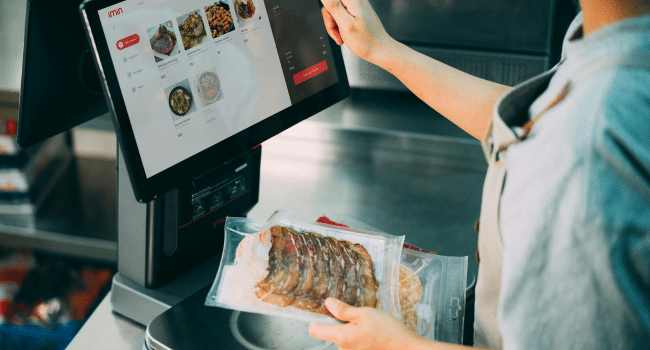Table of Contents
Running food service or retail at scale means systems must keep up with orders, stock, staff, and reporting without adding friction. When point of sale, kitchen screens, online orders, and inventory each live in separate tools, you face repeated data entry, slower service, and fragmented reporting.
The right platform removes those gaps and helps staff move faster while managers get clear, timely numbers. The site https://hashmato.com/ shows how Hashmato combines POS, cloud inventory, kitchen display, online ordering, and multi-location controls so you can grow without rebuilding systems.
In this blog, we’ll explain what makes a POS scalable and how Hashmato POS supports smooth daily workflows, list core features you will use, show how different operations get value, and give a short checklist to evaluate readiness for rollout.
What Scalability Means For A POS
Scalability for a POS is not only about adding more terminals. It means:
- Central control across locations so menus, prices, and taxes update everywhere from one place.
- Reliable syncing ensures transactions are recorded correctly even with poor connectivity.
- APIs and prebuilt connectors enable third-party apps to exchange data automatically.
- Performance under peak traffic, so slowdowns do not cost sales.
Hashmato POS centers these capabilities in a cloud-first design with local offline support, API endpoints, and over 100 integrations so systems keep talking as you add outlets or services.
Core Architecture That Supports Growth
A few architectural choices make a POS truly scalable:
- Cloud Console: a web-based control panel for global settings and reporting across sites. This reduces time spent updating individual terminals.
- Local Device Software: Android or kiosk apps that handle transactions on-site and queue updates when offline.
- Two-Way Sync: transactions captured offline sync to the cloud once connectivity returns, avoiding data loss.
- Integration Layer: pre-built integrations or APIs for delivery marketplaces, accounting, and loyalty systems.
These elements let you add outlets, new sales channels, or integrations with minimal rework.
How Hashmato POS Handles Daily Workflows
Hashmato POS is designed around real tasks your team performs:
1. Order Capture And Routing
- Take orders at a table, kiosk, or online portal and route tickets to the right kitchen station via KDS. This reduces paper tickets and hand-offs.
2. Inventory And Menu Control
- Price and menu changes set in the cloud reflect on POS, kiosks, and online ordering. Ingredient-level stock deduction at sale helps reduce waste and out-of-stock surprises.
3. Payments And Reconciliation
- Fast billing on Android POS terminals with built-in reports for daily reconciliation. This reduces mismatches between sales and bank settlements.
4. Reporting And Alerts
- Ready reports for sales, tax, stock variance, and staff performance that you can view remotely. These reports make it simple to spot issues and act.
Feature Snapshot You Will Use
- Cloud Console for centralized menu, pricing, and user permissions.
- Android POS terminals and waiter apps for speed at the counter.
- Kitchen Display System to route orders and show prep status.
- Offline Mode with automatic two-way sync when the network returns.
- Cloud Inventory with recipe mapping and stock usage at sale.
- 100+ Prebuilt Integrations and APIs for marketplaces, accounting, and CRM.
- Ready Reports (50+) for sales, inventory, and labor to support quick decisions.
These points are the practical tools your managers and staff will use every shift.
Real Examples Of Value Across Operations
Restaurants From Single Outlets To Multi-Unit Franchises
- You keep a single source of truth for menus and promos, compare outlet performance, and deploy updates centrally. When you add stores, new terminals are provisioned and inherit settings from the cloud console.
Retail Boutiques To Supermarkets
- Barcode scanning, return handling, and fast billing reduce queues. Cloud inventory helps plan restock and track shrinkage.
Hospitals And Healthcare Food Services
- Controlled menus with dietary restrictions, linked patient meal plans, and accurate counts for billing and nutrition tracking. Cloud-based reporting gives administrators consolidated visibility.
Institutional Catering For Schools And Universities
- Bulk ordering, tray counts, and simple reconciliation for large-volume service days. Kiosk and self-order solutions reduce queues during breaks.
Implementation And Rollout Best Practices
- Assign a Project Lead: designate one person to oversee menu mapping, tax rules, and hardware setup, ensuring clear responsibilities.
- Start Small: pilot one outlet or service channel to validate device behavior and stock mapping.
- Train Staff With Real Scenarios: run training shifts using peak flow to surface slow screens or mapping errors.
- Monitor Key Metrics Early: track order error rate, average transaction time, and inventory variance in the first 30–60 days.
Piloting reveals configuration gaps before you scale and reduces disruption for staff and guests.
Short Checklist Before You Buy
- Hardware Compatibility: Will Android POS and KDS hardware meet your needs? Check certified device lists.
- Integration Needs: Confirm the delivery marketplaces, accounting platforms, and loyalty systems you must connect.
- Offline Behavior: Simulate a network outage to confirm two-way sync works as expected.
- Reporting Coverage: Align vendor reports with your finance and operations needs to prevent delays in custom reporting.
Measuring Success After Deployment
Watch these signals in the first 60–120 days:
- Reduced order errors or voids per 1,000 transactions.
- Faster transaction times from order to payment.
- Reduced inventory variance month on month.
- Improved sales from a consistent menu and promotion rollout.
These metrics show that the system is not just live but actively reducing friction and loss.
Closing Thought
If you need a POS that grows with you, look for a cloud-first system with local resilience, easy integrations, and centralized controls. Hashmato POS combines those elements so you can add outlets, channels, and services without rebuilding operations. Review product pages, request a demo, and run a short pilot to confirm the fit with your workflows.
